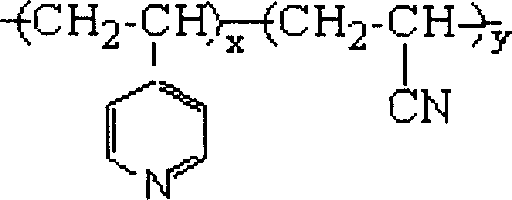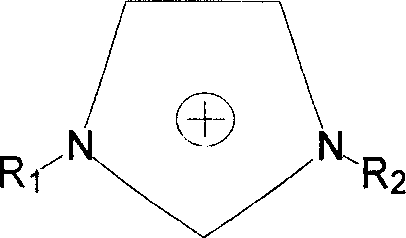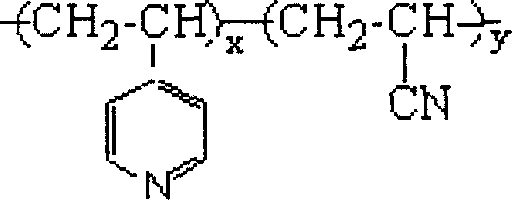Method for preparing chemical crosslink gel lattice polymer electrolyte
A gel network and chemical cross-linking technology, applied in electrolytic capacitors, circuits, capacitors, etc., can solve the problems of low photoelectric conversion efficiency of dye-sensitized solar cells and hinder gel formation, and achieve high photoelectric conversion efficiency and enhanced phase capacitive, avoiding the effect of phase separation
- Summary
- Abstract
- Description
- Claims
- Application Information
AI Technical Summary
Problems solved by technology
Method used
Image
Examples
Embodiment 1
[0034] Add 0.0648g of potassium iodide and 0.0099g of iodine into 1.0000g of propylene carbonate to make a liquid electrolyte. First add 0.0300g of polymer copolymer of 4-vinylpyridine and acrylonitrile, then add 0.0150g of diiodohexane after dissolving, stir evenly, and apply on the dye-sensitized TiO 2 The electrode surface of the nanocrystalline porous film is assembled into a battery by pressing the counter electrode of a Pt sheet on it, and then placed in a 75°C oven for heating and curing for 2 hours to obtain the on-site chemical crosslinked gel network polymer electrolyte of the present invention. Dye-sensitized TiO 2 Nanocrystalline thin film batteries.
Embodiment 2
[0036] Except changing 1.0000g propylene carbonate in step (1) into a mixture of 1.0000g ethylene carbonate and propylene carbonate (volume ratio is 5: 5), other steps and process conditions are the same as in Example 1, to obtain the present invention Dye-sensitized TiO assembled from in-situ chemically cross-linked gel network polymer electrolyte 2 Nanocrystalline thin film batteries.
Embodiment 3
[0038] Except that the Pt sheet counter electrode in step (4) is changed to a platinum-loaded counter electrode, other steps and process conditions are the same as in Example 2, and the dye assembled from the on-site chemical cross-linked gel network polymer electrolyte of the present invention is obtained. Sensitized TiO 2 Nanocrystalline thin film batteries.
PUM
 Login to View More
Login to View More Abstract
Description
Claims
Application Information
 Login to View More
Login to View More - R&D
- Intellectual Property
- Life Sciences
- Materials
- Tech Scout
- Unparalleled Data Quality
- Higher Quality Content
- 60% Fewer Hallucinations
Browse by: Latest US Patents, China's latest patents, Technical Efficacy Thesaurus, Application Domain, Technology Topic, Popular Technical Reports.
© 2025 PatSnap. All rights reserved.Legal|Privacy policy|Modern Slavery Act Transparency Statement|Sitemap|About US| Contact US: help@patsnap.com



